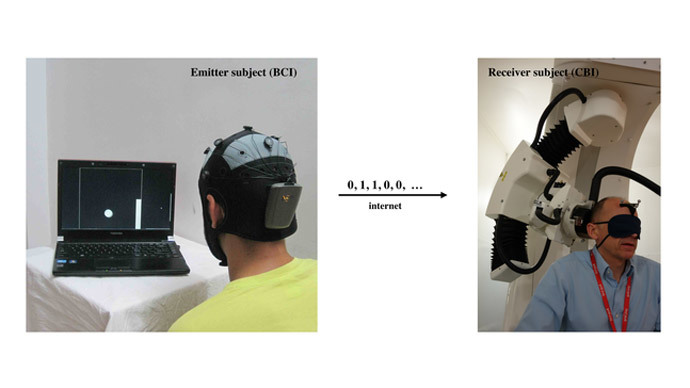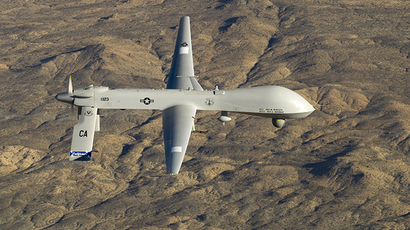Eureka! Researchers conduct first direct brain-to-brain communication over the internet

Scientists arranged the first brain-to-brain communication online, enabling participants to converse with simple words from a distance of some 5,000 miles apart. It’s being hailed as the neuroscientific equivalent of instant messaging.
In what may prove to be the ‘Eureka’ moment of the modern age, researchers using internet-linked electroencephalogram (EEG) and magnetic stimulation (TMS) technologies allowed participants to send the words 'hola' and 'ciao' from a location in India to a location in France using brain sensors.
READ MORE: US Scientists working on mind-controlled drones for military use
"We wanted to find out if one could communicate directly between two people by reading out the brain activity from one person and injecting brain activity into the second person, and do so across great physical distances by leveraging existing communication pathways,"explained coauthor Alvaro Pascual-Leone, MD, PhD, Director of the Berenson-Allen Center for Noninvasive Brain Stimulation at Beth Israel Deaconess Medical Center (BIDMC) and Professor of Neurology at Harvard Medical School.
The research statement said past studies on brain to brain
communication (BCI) usually involved ‘conversation’ between a
human and a computer. In the latest study, however, researchers
included other human beings in the experiment.
Four participants, aged 28 to 50, participated in the study. One
of the four volunteers was assigned to the brain-computer
interface (BCI) branch and was responsible for transmitting
words; the other three were involved in the computer-brain
interface (CBI) section of the experiments. Their task was to
receive the transmissions and understand them.

As explained by the researchers work, recently published in Plos One, “the research team first translated the greetings "hola" and "ciao" into binary code and then emailed the results from India to France. There a computer-brain interface transmitted the message to the receiver's brain through noninvasive brain stimulation. The subjects experienced this as phosphenes, flashes of light in their peripheral vision.
The light appeared in numerical sequences that enabled the receiver to decode the information in the message, and while the subjects did not report feeling anything, they did correctly receive the greetings.
A second similar experiment was conducted between participants in Spain and France, with the end result being a total error rate of 15 percent, which represented 11 percent on the decoding end and five percent on the initial coding messaging.
"This in itself is a remarkable step in human communication, but being able to do so across a distance of thousands of miles is a critically important proof-of-principle for the development of brain-to-brain communications,” says Pascual-Leone.
“We believe these experiments represent an important first step in exploring the feasibility of complementing or bypassing traditional language-based or motor-based communication."














